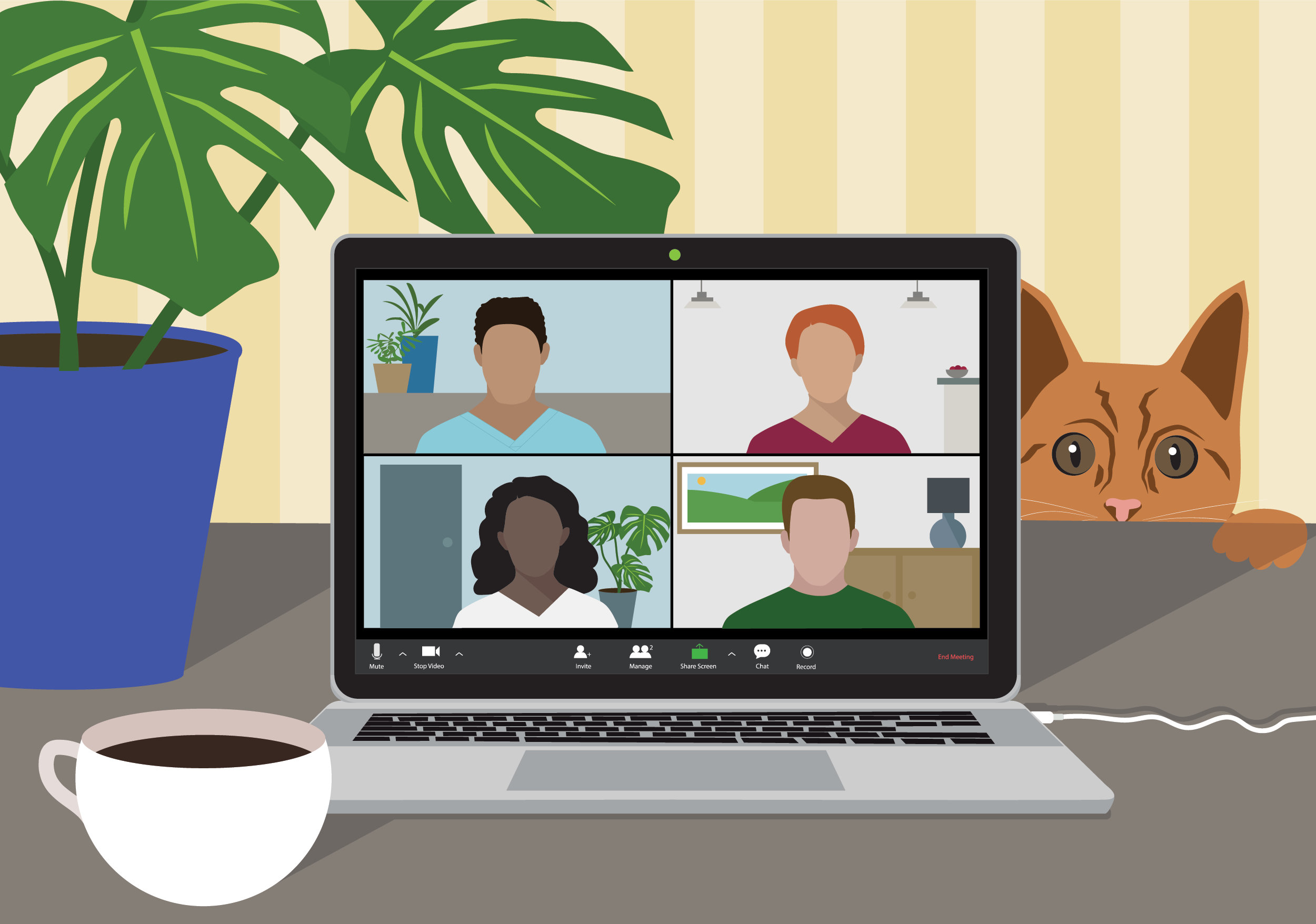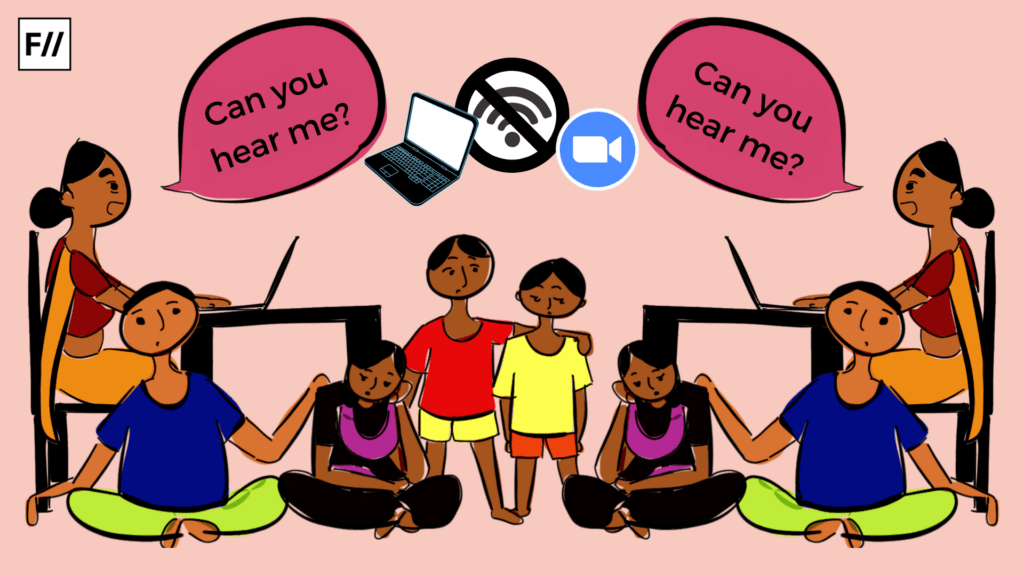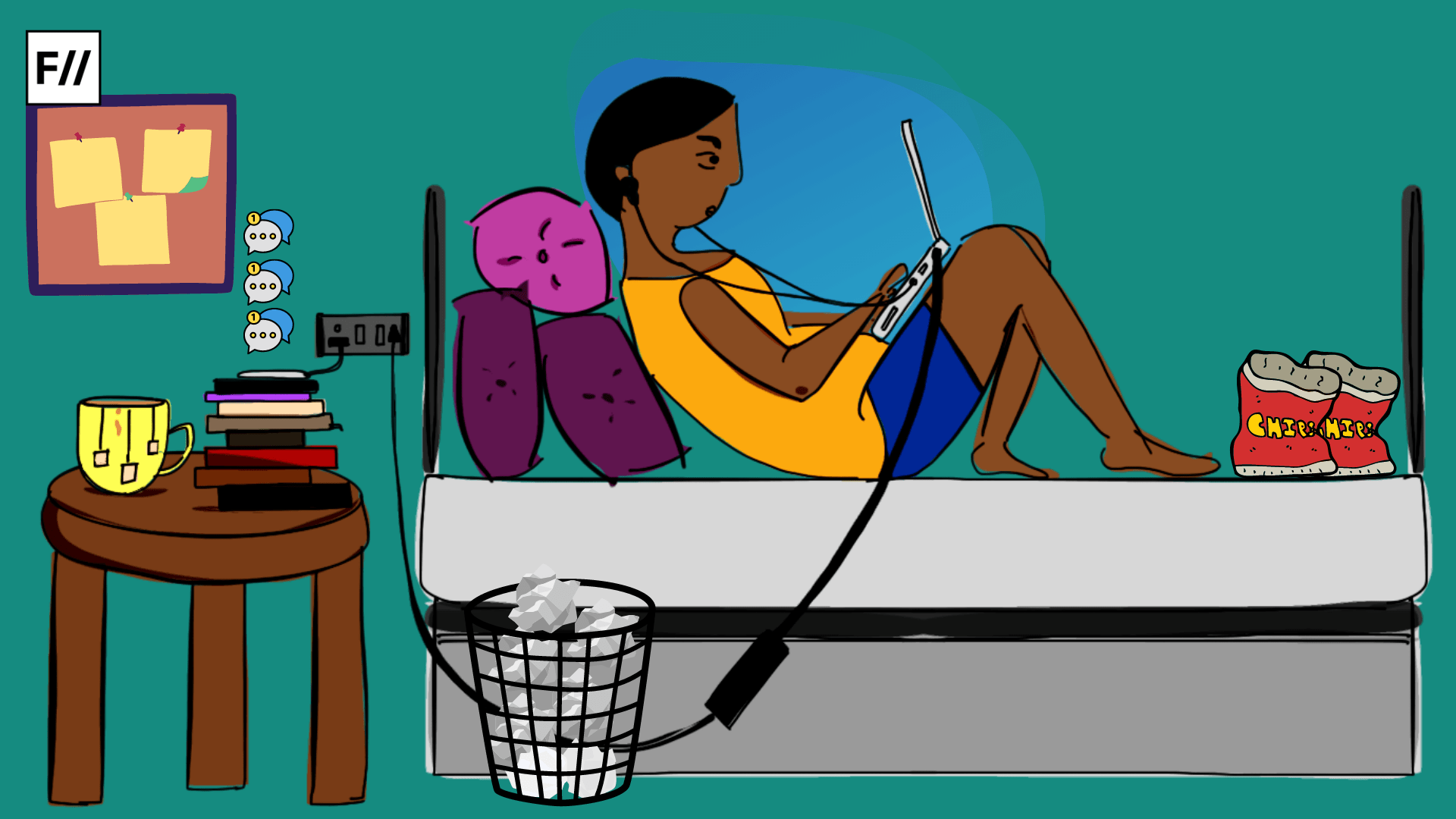Editor’s Note: FII’s #MoodOfTheMonth for August, 2021 is Digital Realities. We invite submissions on the many layers of experiences from the virtual world throughout the month. If you’d like to contribute, kindly email your articles to sukanya@feminisminindia.com
I can’t remember the last time I was not scolded by my mother for sitting too long with my phone or laptop, ignoring her shouts and my household chores. Ironically, I have now rather exponentially increased my time and engagement with digital screens, thanks to the repeated lockdowns, minimal outings and work-from-home scenario.
Before the onslaught of Covid-19, I was a part of the generation that got overwhelmed with the mass accessibility to android and windows technology in mobile phones and computers as teenagers, and then frequently got disciplined by parents for spending too much time with the phone.
My days as a recalcitrant teenager with a lengthy record of indulging in unproductive scrolling and chatting on social media, consuming numerous pirated movies and drama series and my mother’s warnings of “Go live inside the screen! Don’t ever come out!” are long gone.

Nowadays, her hand gestures and hushed words asking me when I will be free for lunch or when my all day long online classes will end are common in our home. My habit of checking text messages, scrolling through social media during study hours and anxiously stashing it under textbooks and copies to prevent my parents from finding out have been replaced by new habits of searching for my phone amongst papers littered across the bed, rolling shoulders after hunching all day in front of the laptop and rubbing my eyes and sighing with relief after getting rid of the PDFs of the books on the electronic screen at night.
I have also witnessed my acquaintances participate in formal virtual meetings of professional nature in a formal shirt, tie, suit jacket and a cotton shorts, since the camera range only covers up to the bust. Clothing and appearance have further shifted below in priority even in formal, corporate environments. Strong internet connection, ability of virtual persuasion, communication without human connection, and maximisation of online resource utilisation are now considered more valuable priorities
The bed, instead of looking inviting and a refuge for rest and rejuvenation at the end of the day, has been my standard space for spreading out stationeries and electronic equipment. Pillows have become my go to support for leaning backwards throughout the day.
The lockdowns, virtual meetings and conference calls have altered our linguistic, dietary and sartorial practices. During the last one and half years the phrases I have most frequently used and listened to have been, “Am I audible?”, “Can you see the screen?”, “Please reconnect, you are not audible”, “Switch your camera off, it might improve the sound” and so on.

The mandatory hugging and checking on one another while meeting friends has been replaced by a wide smile and waving hand gesture in virtual conferences. Instead of eating at the dining table with my mother and making small talk, I more often than not have frequent snacks while sitting on the bed, staring at the screen of the laptop.
My mother, who used to scold me earlier for eating food on the bed, not having timely meals and engaging in other tasks while eating, now brings me dry snacks and helps me clean up the bed after I have dirtied it with littered pages, books, chargers and food bowls.
Also read: Learning Through Rectangles: Online Classes Have Taken Away Some Precious Moments From Us
While I had to dress up appropriately, brush my hair and check my appearance in the mirror before going out, now, the only scrutiny I do before logging into a virtual session is checking if my face is visible in the front camera and if my voice is audible over the microphone.
In fact, I have also witnessed my acquaintances participate in formal virtual meetings of professional nature in a formal shirt, tie, suit jacket and a cotton shorts, since the camera range only covers up to the bust. Clothing and appearance have further shifted below in priority even in formal, corporate environments. Strong internet connection, ability of virtual persuasion, communication without human connection, and maximisation of online resource utilisation are now considered more valuable priorities.

However, one thing that is out of our control in this work-from-home culture is a strong internet connection. Frequent logging out, leaving and deterioration of video or audio quality during meetings not only hamper the ongoing presentation but also sever the concentration of both speakers and listeners.
As a resident of a bustling metropolitan surrounding, I experience these problems far less than my friends, classmates and colleagues living in rural areas and remote locations. Furthermore, not all of us are privileged enough to have separate living and working spaces within the residence. The disturbances created by other household members doing their own activities also have to be accommodated, sometimes by muting oneself and sometimes by switching the video camera off.
The screen, now a close acquaintance of our daily life is also as active, versatile and volatile as a living breathing organism. Though it equalises the users on the surface when fitted into rectangles of digital interfaces, it has created new kinds of social hierarchy and marginalisation
Some of my friends, who do not have access to all the gadgets needed for online classes and presentations, simply have to rely on verbal presentations and handwritten ones converted to PDFs. If more than one occupant of a room is engaged in a virtual conference or online class it also creates a distraction for the others.
My own mother doing household chores, or talking over the phone in the same room where I attend online classes, sometimes is distracting for me. At the same time, I have heard from my friend about his young nephew often switching his camera and microphone off to play video games or browse the internet during online classes, on days when the child is left unsupervised.

So while digital realities have brought out several existing discriminations on the basis of living standard, economic backgrounds, residential location, and so on, it is very difficult to assess the impact on different people’s lives, academic or professional performances from their demeanor because very little can be gathered from their appearances or conduct on these screens.
The screen, now a close acquaintance of our daily life is also as active, versatile and volatile as a living breathing organism. Though it equalises the users on the surface when fitted into rectangles of digital interfaces, it has created new kinds of social hierarchy and marginalisation.
But that does not obscure some of its utilities, the most significant of them being the continuation of education and work in a challenging environment amidst a pandemic. The younger generations of children, already efficient with handling electronic devices because of their former addiction to different forms of digital entertainment, now use the same devices for educational purposes.
The digital reality, which already was shrouding our daily life, has now become a more intense and inevitable part of our lived experience.
Also read: Digital Learning: Covid Underlines Privilege Divide And Inadequate Teacher Training
Evia is a postgraduate history student at the Jawaharlal Nehru University and an aspiring feminist scholar. She does not have an active social media account at present, but can be contacted by email on eviaballav1@gmail.com
Featured Image Source: Ritika Banerjee for Feminism In India




